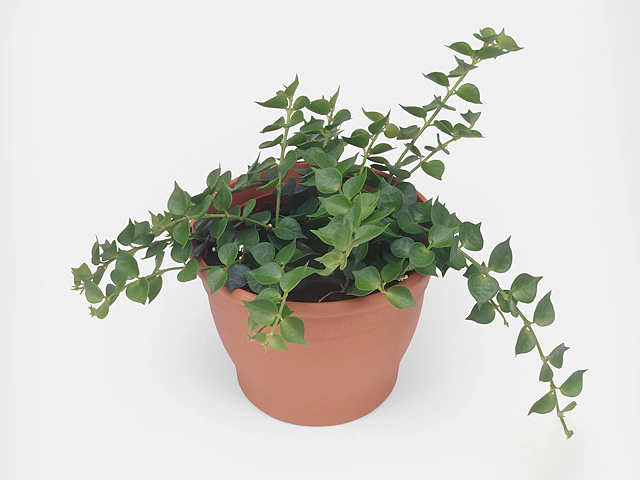Dischidia ruscifolia

Dischidia ruscifolia, also known as the Million Hearts plant, is a stunning epiphytic vine that belongs to the Apocynaceae family. Native to Southeast Asia, this unique plant has gained popularity among plant enthusiasts for its attractive appearance and low-maintenance nature. Its common name, Million Hearts, stems from the clusters of heart-shaped leaves that cover the plant's trailing stems.
One of the most eye-catching features of Dischidia ruscifolia is its foliage. The leaves are glossy and succulent, measuring approximately 1-2 centimeters in length. They have a vibrant green color with prominent veins, which adds to their overall appeal. The small heart-shaped leaves are densely arranged along the stems, giving rise to the plant's characteristic carpet-like appearance.
In addition to its decorative leaves, Dischidia ruscifolia produces unique flowers. The blooms are tiny and are usually inconspicuous compared to the lush foliage. The flowers are white in color and have a tubular shape, often resembling miniature lanterns. While the flowers may not be the highlight of this plant, they still add charm when they appear.
Caring for Dischidia ruscifolia is relatively easy, making it a popular choice for both beginner and seasoned gardeners. This plant thrives in bright, indirect light but can tolerate some shade. It can be grown both outdoors in warm climates and indoors in containers. When grown indoors, it is best to place the plant in a sunny spot near a window.
Watering the Million Hearts plant requires a delicate balance. Overwatering can lead to root rot, while underwatering can cause the leaves to dry out. Ideally, the soil should be allowed to dry out slightly before watering again. It is crucial to avoid leaving the plant sitting in standing water, as this can be detrimental to its health.
Dischidia ruscifolia is not particularly demanding when it comes to soil requirements. A well-draining potting mix works well for this plant. Adding perlite or pumice to the soil mixture can help improve drainage. Fertilizing the plant every 2-3 months during the growing season with a balanced houseplant fertilizer can also promote healthy growth.
One interesting aspect of Dischidia ruscifolia is its unique method of obtaining nutrients. Like other epiphytic plants, it can grow on other plants or structures without causing harm. The Million Hearts plant is known to produce aerial roots, which attach themselves to the surface they grow on. These roots then absorb moisture and nutrients from the air and rain.
Overall, Dischidia ruscifolia, or Million Hearts plant, is a captivating addition to any indoor or outdoor garden. With its heart-shaped leaves and low-maintenance care requirements, it is sure to attract attention and become a favorite among plant enthusiasts. Whether grown as a hanging plant or displayed on a shelf, this delightful vine is bound to bring beauty and tranquility to any space.
Market availability index by month:
| Jan. | Feb. | Mar. | Apr. | May | Jun. | Jul. | Aug. | Sep. | Oct. | Nov. | Dec. |
|---|---|---|---|---|---|---|---|---|---|---|---|
| 3 | 2 | 3 | 3 | 3 | 2 | 2 | 3 | 3 | 4 | 3 | 2 |